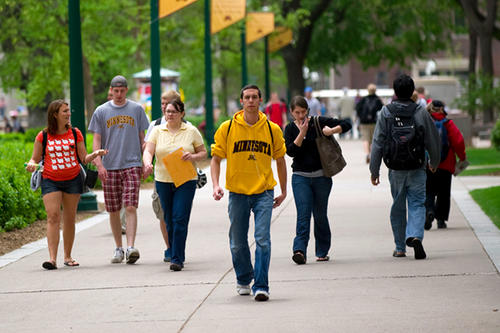
The University of Minnesota is dedicated to keeping tuition stable and affordable for students. During President Eric Kaler’s five-year tenure, the average annual tuition increase for resident undergraduate students has been 1 percent on the Twin Cities campus and 0.4 percent on the other U campuses.
The U’s budget for 2016-17—approved by the Board of Regents on June 10—calls for no tuition increase for Minnesota residents at the U’s system campuses, and an increase of 2.5 percent for resident students on the Twin Cities campus.
But the U is stepping up efforts to offset that increase for students—especially those from middle-class families. In conjunction with the new budget, the U is raising the family-income ceiling for its Promise Scholarship to $120,000 (up from $100,000). Those in the new tier will receive additional aid of $306, completely offsetting the tuition increase for approximately 10,000 students on the Twin Cities campus.
Students from wealthier families don’t typically struggle as much with their tuition, and students from lower-income families are reasonably well taken care of with need-based aid, according to Bob McMaster, the U’s vice provost and dean of undergraduate education. “The middle-income group is this emerging category that we need to focus on,” he says.
That’s been addressed with greater emphasis in recent years, first with the Larson Scholarship (named for the late regent David M. Larson) for middle-income students, then the expansion of the U Promise scholarship to families earning up to $100,000. Other scholarships—including the Buuck, Olseth, and Johnson family scholarships—have followed, bolstering the pool of need-based aid available for middle-income families.
“Our financial aid strategy is to to maximize our resources to try to ensure that students graduate with minimal debt,” says McMaster. “It’s a critical investment to help the middle-income students who just don’t have access to a lot of the resources that others do. It’s a very wise investment for the University of Minnesota (and for the state of Minnesota) to do this.”
- Categories:
- Education





